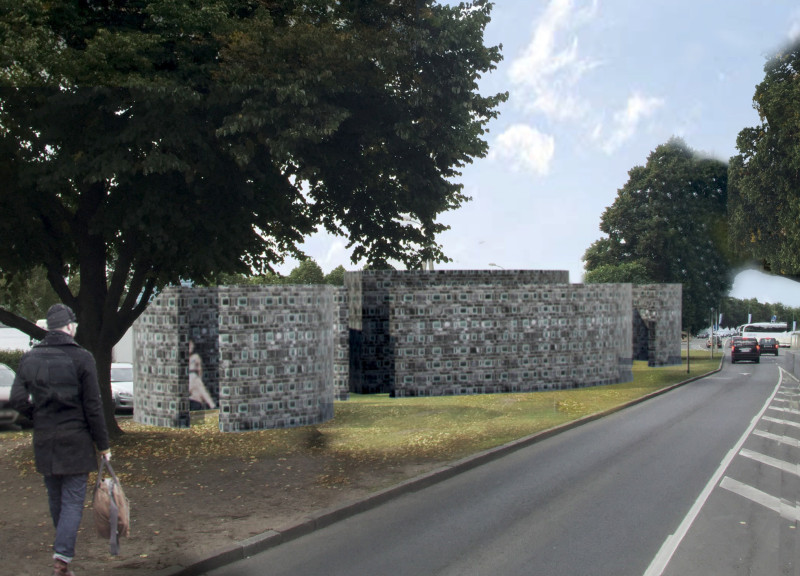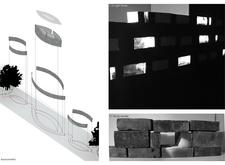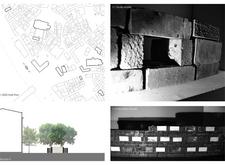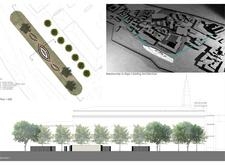5 key facts about this project
### Overview
The Chain Memorial is situated in Riga and serves as a commemorative structure that addresses critical historical narratives. Designed to evoke themes of memory and identity, the project emphasizes a dialogue between the past and present through its architectural form and spatial organization. The integration of the memorial within its urban context enables both continuity with the surrounding environment and an inviting atmosphere for reflection.
### Spatial Organization and Materiality
The architectural form features undulating surfaces that suggest movement and connectivity, encouraging interaction from various perspectives. The memorial employs natural stone as its primary material, lending a sense of permanence, while strategically placed glass inserts create a dynamic interplay of light and shadow, enhancing the memorial's narrative. Concrete serves as a robust secondary material, contrasting with the softer stone elements and contributing to the overall structural integrity.
The relationship between landscape and design is integral, with ample vegetation surrounding the site to soften the hardscape and foster a tranquil space for contemplation. Thoughtfully designed pathways and seating areas promote visitor engagement, guiding individuals through the space to reflect on its significance. The varying scales of the memorial elements relate closely to the human form, ensuring accessibility and facilitating diverse forms of interaction, whether intimate or communal.





















































